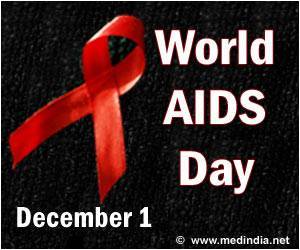World AIDS Day aims at encouraging public support to prevent the spread of HIV infection as well as provide awareness and education about HIV/AIDS in all countries of the world.

There is a specific theme for the World AIDS Day campaign; each year's theme is chosen by the Global Steering Committee of the World AIDS Campaign.The theme for World AIDS Day 2014 is “Getting to Zero - “Focus, Partner, Achieve: An AIDS-Free Generation.”. Zero New HIV Infections. Zero Discrimination and Zero AIDS-related deaths. The themes are not just used for a single day throughout the year across many countries to highlight HIV/AIDS awareness within the context of other major global events.
It is estimated that globally a whopping 34 million people suffer HIV infection. As high as 25 million people have died from this deadly AIDS virus between 1981 and 2007, making it one of the most destructive pandemics in history. Celebrating World AIDS Day reminds the public and Government that HIV is still very much prevalent and that there is an immediate need to increase awareness, fight prejudice and improve education.
There is an unending effort to end the AIDS epidemic by 2030 by educating people on HIV prevention, providing treatment and support services. The campaign also strives to empower and enable all HIV positive people across the world, to access the vital services they need.
HIV vs. AIDS
AIDS is different from HIV; a person who is HIV positive does not necessarily have AIDS, but all people with AIDS are HIV positive. Human Immunodeficiency Virus or HIV is a virus that causes Acquired Immune Deficiency Syndrome or AIDS.
In the advanced phase of HIV infection, you may develop a number of ‘AIDS-defining illnesses’ which could be very debilitating and possibly lead to death.
The first step is to increase your knowledge about HIV. By being informed about how HIV is transmitted and how to protect ourselves and others, you could enjoy life and prevent the spread of HIV:
- Be in a long-term mutually monogamous relationship with a single uninfected partner or you could abstain from sex.
- Limit the number of your sex partners. Fewer partners could potentially reduce your risk of HIV infection.
- When engaging in sexual activity, latex condoms are proven to be highly effective at preventing transmission of HIV or any other sexually transmitted diseases.
- Do not use natural or lambskin condoms as they do not provide sufficient protection against HIV infection.
- If you happen to use/ inject drugs, adhere to safe practises. Do not share needles.
- Consult your doctor immediately if you are HIV positive and find out that you are pregnant. Your doctor will prescribe medications to reduce your baby’s risk of being infected with HIV.
- If you are a HIV positive mother, you should abstain from breastfeeding your child since this infection could be transmitted from mother to child via breast milk. Recommendations vary with countries. In developing countries like India, the recommendation is to adhere to exclusive breastfeeding. Ask your doctor to provide alternatives to nursing your baby.
- Make sure you get tested on a regular basis to know your HIV status. It is recommended that everyone between the ages of 13 and 64 should be tested for HIV at least once.
- If the test is negative, then your doctor will counsel you how to remain that way. However if the test is positive, then it is imperative to start treatment and know the methods to prevent the spread of HIV.
- Follow the WHO recommendation of standard antiretroviral therapy (ART) therapy for treatment. It consists of a combination of atleast three antiretroviral (ARV) drugs to maximally suppress the HIV virus and stop the progression of HIV disease.
- Participate in HIV risk reduction programs on a regular basis which will help you make healthy decisions, such as negotiating condom use or discussing HIV status. Talk to your health care provider who could refer you to such programs in your area.
Source-Medindia















